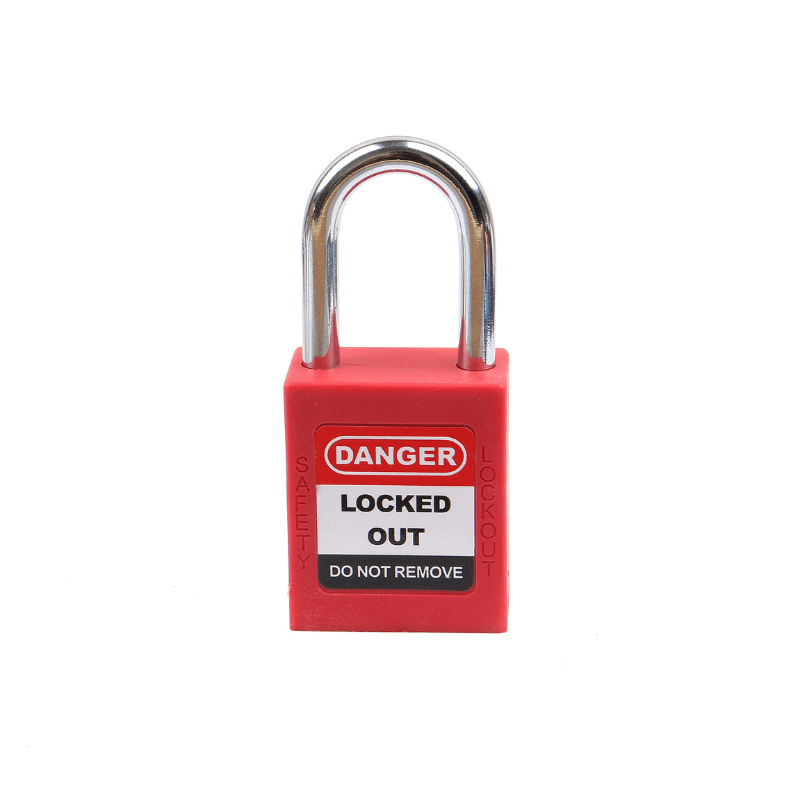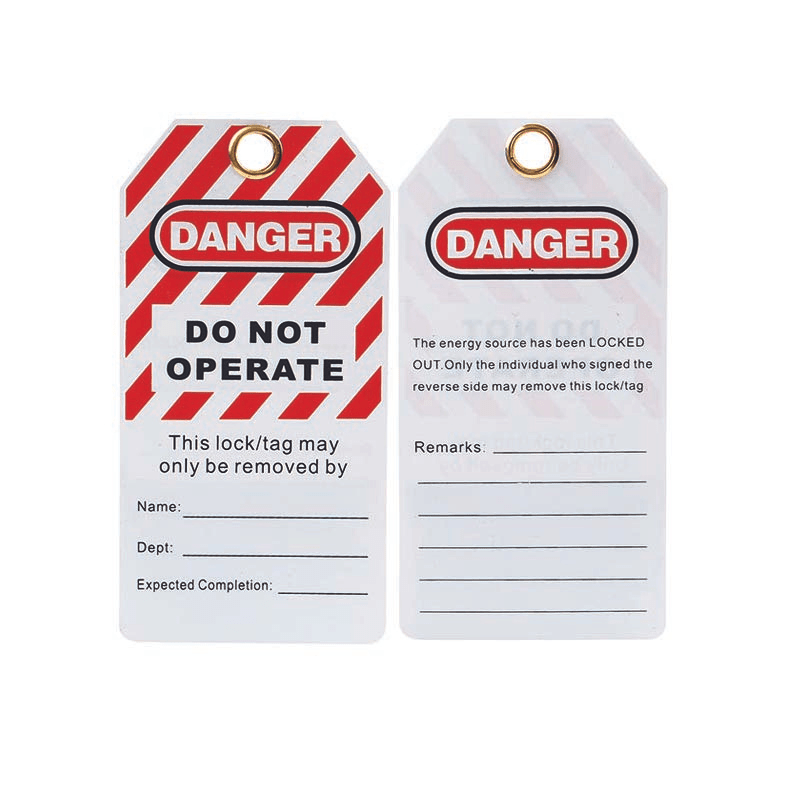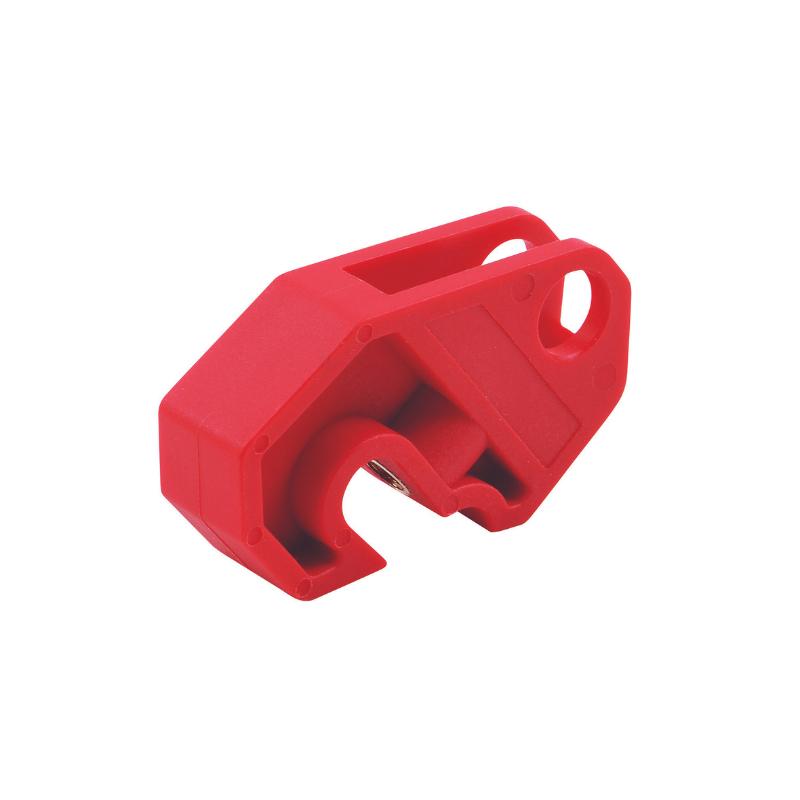Lockout/Tagout (LOTO) procedures are vital for ensuring workplace safety by preventing the accidental release of hazardous energy during the maintenance and servicing of equipment. However, the effectiveness of LOTO depends significantly on its proper implementation. Despite the best intentions, companies often stumble upon several common pitfalls that can undermine safety efforts. In this blog, we'll explore these common mistakes and provide expert advice on how to avoid them, highlighting how The Lock Box's products can support compliance and enhance safety.
Overlooking Comprehensive Training: A Critical Oversight
Neglecting thorough LOTO training across the board is a prevalent misstep that can significantly compromise workplace safety. The essence of LOTO training transcends beyond the realms of just the maintenance team. It is imperative for every employee, from the office staff to the floor workers, to grasp the fundamentals of LOTO practices. This foundational knowledge empowers them to identify when machinery is rendered inaccessible due to ongoing maintenance activities, thereby averting potential safety hazards.
In many instances, non-maintenance staff might inadvertently attempt to operate equipment under maintenance due to a lack of awareness about active LOTO procedures. For example, an operator might not recognize a tagged out control panel and attempt to initiate the machine, or a cleaner might unknowingly plug back in a disconnected power source. Such scenarios underscore the critical need for comprehensive LOTO training that encompasses the entire workforce.
Solution: Broadening the Training Horizon
To mitigate this risk, it's advisable to orchestrate regular, detailed training sessions that cater to the entire employee spectrum. These sessions should cover the A-Z of LOTO procedures, including the identification of different types of energy sources (electrical, mechanical, hydraulic, etc.), the significance of various lockout devices, and the correct application of tagout labels.
Practical Training Aids:
The Lock Box steps in as an instrumental ally in this educational journey, offering an extensive array of LOTO training aids designed to simulate real-life scenarios. For instance, practical demonstrations using actual lockout devices can provide hands-on experience, making the learning process more tangible and impactful. Visual aids such as instructional videos and detailed procedure manuals further enrich the training experience, catering to varied learning styles.
Interactive Workshops:
Interactive workshops can be particularly effective, where employees from different departments participate in mock LOTO drills. These drills could involve a step-by-step walkthrough of securing a piece of equipment, with participants taking turns to apply locks and tags. This not only reinforces the learning but also fosters a collaborative safety culture within the organization.
Feedback and Q&A Sessions:
Incorporating feedback sessions and Q&A segments at the end of each training module can provide valuable insights into employee understanding and uncover areas that may require further clarification. This iterative approach ensures that all employees, irrespective of their role, develop a robust understanding of LOTO procedures and their critical role in maintaining workplace safety.
Expanding the scope of LOTO training to encompass the entire workforce is not just a regulatory compliance measure but a fundamental safety imperative. By leveraging The Lock Box's comprehensive training aids and adopting an inclusive training approach, organizations can significantly elevate their safety standards, ensuring a well-informed, safety-conscious workforce poised to recognize and respect LOTO protocols, thereby safeguarding both personnel and machinery from unforeseen hazards.
Inadequate LOTO Devices: Compromising Safety with Substandard Solutions
The deployment of subpar or incorrect lockout devices in the execution of LOTO procedures is a pervasive issue that can significantly undermine the integrity of workplace safety protocols. A common oversight in this realm is the utilization of conventional padlocks as substitutes for specialized LOTO padlocks. Such standard locks may not only falter in the demanding milieu of industrial settings but also pose a security risk due to the potential for key duplication, thereby jeopardizing the safety of maintenance personnel and machinery.
For example, envision a scenario where a standard padlock, perhaps one typically used for locker security, is employed to lock out a high-voltage control panel. This padlock, not engineered for industrial resilience, could corrode or fail in harsh conditions, or its key could be easily replicated, allowing unauthorized access. Similarly, utilizing cable ties or makeshift tags in place of professional lockout devices not only fails to secure the equipment adequately but also does not comply with regulatory standards, leading to legal and safety repercussions.
Solution: Elevating Safety with Specialized LOTO Devices
To circumvent such risks, it's paramount to invest in high-caliber, bespoke LOTO devices crafted to meet the rigorous demands of industrial safety applications. The Lock Box stands at the forefront of this initiative, presenting an expansive assortment of LOTO padlocks that epitomize durability and security.
Durable Design for Industrial Rigor:
These padlocks are constructed with robust materials capable of withstanding extreme environments, from the corrosive atmospheres of chemical plants to the dust-laden air of construction sites. Their resilient design ensures that they remain functional and secure, irrespective of the industrial challenges they face.
Unique Keying for Enhanced Security:
Each padlock is uniquely keyed to prevent unauthorized access, a critical feature that eliminates the risk of key duplication that plagues standard locks. This unique keying system ensures that only authorized personnel can remove the lock, maintaining strict control over equipment access during maintenance periods.
Color-Coded for Efficient Identification:
To further enhance the efficiency and safety of LOTO procedures, The Lock Box offers color-coded padlocks. This feature allows for the easy identification of lockout devices corresponding to specific departments, machinery types, or energy sources, streamlining the lockout process and reducing the likelihood of errors. For instance, red padlocks might be designated for electrical systems, while blue padlocks are used for water supply controls, facilitating quick and accurate identification by maintenance teams.
Versatile Lockout Solutions for Diverse Applications:
Understanding that industrial settings are replete with a wide variety of equipment and energy sources, The Lock Box's range extends beyond padlocks to include valve lockouts, electrical plug covers, and cable lockout devices. Each is designed with a specific application in mind, ensuring that whether the task involves isolating a gas valve or securing an electrical plug, there is a tailored solution that guarantees effective and compliant lockout.
Transitioning from generic locking mechanisms to specialized LOTO devices is not just an upgrade; it's a fundamental shift towards ensuring uncompromised safety in industrial environments. By embracing The Lock Box's suite of purpose-built LOTO solutions, organizations can fortify their safety protocols, safeguard their workforce, and ensure compliance with the stringent standards governing workplace safety.
Neglecting Regular Audits: The Silent Threat to LOTO Integrity
The omission of routine LOTO audits is a subtle yet significant oversight that can gradually erode the foundation of a workplace's safety culture. These audits serve as critical checkpoints to assess the efficacy, compliance, and relevance of existing LOTO procedures against the backdrop of evolving regulatory landscapes and technological advancements in machinery. Without these periodic reviews, outdated practices may linger, unaddressed gaps may widen, and the overall safety protocol may drift into obsolescence, leaving workers vulnerable to preventable hazards.
Consider, for instance, a manufacturing facility that has recently upgraded its production line with state-of-the-art machinery. If LOTO audits are sporadic or non-existent, the existing LOTO procedures may not account for the new equipment's specific lockout requirements, potentially leading to unsafe maintenance practices. Similarly, regulatory updates that introduce new safety standards may go unincorporated into the LOTO protocol, risking non-compliance and the associated legal ramifications.
Solution: Instituting a Rigorous Audit Regimen
To mitigate these risks and uphold the sanctity of workplace safety, it's imperative to establish and rigorously adhere to a structured schedule for LOTO audits. These audits should be comprehensive, encompassing a thorough review of all LOTO procedures, devices, and training records to ensure they align with current regulations, equipment specifications, and best practices.
Employing Comprehensive LOTO Kits:
To streamline the audit process and ensure nothing is overlooked, leveraging all-encompassing LOTO kits is advisable. The Lock Box's Lockout Tagout Stations are exemplary in this regard, offering a consolidated solution that houses an array of LOTO devices and signage. These stations not only facilitate easy access to necessary lockout tools but also serve as visual reminders of the LOTO protocol, reinforcing its importance within the workplace.
Detailed Audit Checklists:
Implementing detailed audit checklists can significantly enhance the efficiency and thoroughness of the review process. These checklists should cover various aspects, including the condition and availability of lockout devices, the clarity and accessibility of LOTO procedures, the comprehensiveness of employee training, and the signage's visibility and relevance. Regular updates to these checklists, informed by audit findings, regulatory changes, and equipment upgrades, can ensure that they remain effective audit tools.
Cross-Departmental Involvement:
Involving representatives from various departments in the audit process can provide diverse perspectives and insights, contributing to a more holistic review. For example, engaging maintenance personnel, safety officers, and operational staff can uncover practical challenges and suggestions for improving the LOTO procedures' applicability and effectiveness.
Feedback Loops and Continuous Improvement:
Post-audit, establishing feedback loops where findings are discussed, and corrective actions are formulated and implemented is crucial. This iterative process fosters a culture of continuous improvement, where LOTO protocols are not static documents but evolving practices that adapt to safeguard the workforce against emerging risks and challenges.
In essence, regular LOTO audits are not mere procedural formalities but pivotal elements of an effective safety management system. By integrating comprehensive LOTO solutions from The Lock Box and adopting a systematic approach to audits, organizations can ensure their LOTO protocols are robust, relevant, and resilient, thereby upholding the highest standards of workplace safety and regulatory compliance.
Poor Documentation: A Pathway to Unsafe Practices
In the intricate dance of maintaining workplace safety, the role of well-documented Lockout/Tagout (LOTO) procedures is paramount. Yet, it's alarmingly common to encounter scenarios where LOTO documentation is either cursory, outdated, or, in the worst cases, non-existent. This oversight can muddle the clarity of LOTO processes, leading to inconsistent practices that jeopardize worker safety and operational integrity.
Imagine a scenario in a bustling manufacturing plant where multiple models of the same equipment type are in use, each with its unique lockout points and energy isolation requirements. Without meticulously documented procedures that account for these nuances, employees might apply a one-size-fits-all approach to lockout, potentially overlooking critical steps and exposing themselves to grave risks.
Solution: Crafting Precision in Documentation
The antidote to this challenge lies in creating and maintaining precise, equipment-specific LOTO procedures. These documents should serve as comprehensive guides, detailing every step of the lockout process, from identifying all energy sources to applying lockout devices and verifying energy isolation.
Enhancing Accessibility with LOTO Stations:
To elevate the efficacy of these documents, their accessibility is key. The Lock Box's LOTO stations offer an innovative solution by integrating procedure holders within the stations. These holders can house laminated copies of LOTO procedures, ensuring they are not only shielded from the industrial elements but also readily available at the point of need.
Incorporating Visual Aids:
Augmenting written procedures with visual aids such as diagrams, flowcharts, and photographic references can significantly enhance comprehension. For instance, a step-by-step photographic guide showing the correct application of a lockout device on a specific machine can provide clear, unambiguous instructions, reducing the scope for errors.
Regular Reviews and Updates:
Given the dynamic nature of industrial environments, where equipment is routinely upgraded, and new machinery is introduced, LOTO documentation must be a living entity subject to regular reviews and updates. This iterative process ensures that procedures remain aligned with the current operational landscape, reinforcing safety protocols.
Interactive Digital Platforms:
Leveraging technology to digitize LOTO procedures can further streamline access and update processes. Interactive digital platforms can host an array of LOTO documentation, enabling real-time updates, easy retrieval, and interactive elements such as instructional videos. QR codes placed on equipment linking directly to the relevant LOTO procedure offer a modern, efficient way to ensure the right information is always at the fingertips of those who need it.
Training and Familiarization:
Beyond documentation, actively training employees on understanding and following these procedures is crucial. Regular training sessions, reinforced by on-the-spot guidance using the documented procedures, can ensure that employees are not just aware of the documents but are also proficient in interpreting and executing them.
In essence, the foundation of a robust LOTO program lies in the quality and accessibility of its documentation. By harnessing solutions like The Lock Box's LOTO stations and embracing detailed, dynamic documentation practices, organizations can significantly mitigate the risks associated with poor documentation, ensuring a safer, more consistent approach to equipment maintenance and energy isolation.
Avoiding these common pitfalls in LOTO implementation requires a combination of comprehensive training, high-quality LOTO devices, regular audits, clear documentation, and a strong safety culture. By addressing these areas and utilizing specialized products from The Lock Box, companies can significantly enhance the effectiveness of their LOTO procedures, ensuring a safer workplace for all employees.
Remember, the key to effective LOTO implementation lies not just in the procedures themselves but in the commitment to ongoing education, proper equipment, and a culture that prioritizes safety above all. The Lock Box is your partner in this endeavour, providing the tools and resources needed to avoid common pitfalls and maintain a safe working environment. If you want to discuss how we can help partner with you to create a safer workplace please contact us.



